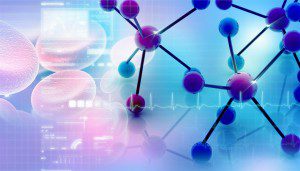Guest Writer for Wake Up World
Your endocrine system is your main hormone regulator and endocrine disruptors are chemicals that throw it out of whack. Chemicals like BPA and phthalates are infiltrating our lives at an ever increasing rate.[1] [2]Considering that hormones control everything from metabolism to sleep, protecting it from disruption should be a top priority.
Endocrine Disruptors to Avoid
Plastics are the main source for endocrine disruptors but they’re not the only culprits. Paper receipts, money, tin cans, and electronics are all common, everyday products that contain endocrine disrupting chemicals. Let’s take a look at a few ways endocrine disruptors are destroying our health.
[pro_ad_display_adzone id=”110028″]
1. Endocrine Disruptors Harm Reproductive Health
Endocrine disruptors are commonly found in personal items, medicines, and cleaning products. Believed to be especially harmful to male reproductive health, these chemicals are linked to testicular cancer, male infertility, and even genital deformities. That same sunscreen you use for protection from the sun’s harmful rays might be one of the sources of disruptors that could be causing some unexpected issues.[3][4] A recent study found a chemical in sunblock has been linked to infertility in men, and another noted that phthalates in toys cause many of the same issues.[5] It’s not just men who are at risk from endocrine disruptors. Evidence shows women are also in danger, and can even have a shorter reproductive lifespan.[6][7]
2. Endocrine Disruptors Cause Hormonal Imbalance
While BPA is a known endocrine disruptor, a recent study showed that BPA-free plastics might be just as bad. Some BPA-free resins have been found to contain estrogen-like compounds.[8] These resins are used in plastic production and substituted for BPA. Keep your eyes open for phthalates and parabens, too, two endocrine disruptors commonly found in personal hygiene products that are known to cause hormonal imbalances.[9]
3. Endocrine Disruptors Lower a Child’s IQ
Perchlorate is an endocrine disruptor found in rocket fuel, fertilizers, and fireworks. It’s even been found in 4 percent of large US water supplies – mainly those near military bases or defense compounds. A recent study suggested that prenatal exposure could affect a child’s IQ. [10] This isn’t the first time the finger has been pointed at perchlorate. Perchlorate exposure is known to affect thyroid function in women by stopping the necessary transport of iodine–perhaps this is how the lower IQ happens. [11]
Is There Any Hope?
There is an effort in the European Union (EU) to ban endocrine disruptors, but it’s slow going.[12] Billion-dollar corporations, more concerned with profits are throwing up roadblocks. After all, a European ban on toxic chemicals would mean many products sold would need to be reformulated.[13] I think, though, as long as at least one government is trying to change this issue, there’s hope — if only a glimmer.
What do you think? Do you take a concerted effort to avoid endocrine disruptors? Leave a comment below and let us know where you stand.
-Dr. Edward F. Group III, DC, NP, DACBN, DCBCN, DABFM
Article References:
- Barrett, J. EDCs and Estrogen Receptor Activity: A Pathway to Safer Chemical Design? Environmental Health Perspectives. 122 (12).
- Hormone Health Network. Endocrine-Disrupting Chemicals. Endocrine Society.
- Norden. The Cost of Inaction: A Socioeconomic analysis of costs linked to effects of endocrine disrupting substances on male reproductive health. Norden.
- Louis, G. et al. Urinary Concentrations of Benzophenone-Type Ultraviolet Radiation Filters and Couples’ Fecundity. American Journal of Epidemiology. 180 (12).
- Federal Register. Prohibition of Children’s Toys and Child Care Articles Containing Specified Phthalates. Federal Register.
- Fowler, PA et al. Impact of endocrine-disrupting compounds (EDCs) on female reproductive health. Molecular and Cellular Endocrinology. 355 (2).
- Evanthia Diamanti-Kandarakis, Jean-Pierre Bourguignon, Linda C. Giudice, et al. Endocrine-Disrupting Chemicals: An Endocrine Society Scientific Statement. Endocrine Reviews. 30 (4).
- Bittner, G. Chemicals having estrogenic activity can be released from some bisphenol a-free, hard and clear, thermoplastic resins. Environmental Health Perspectives. 13 (103).
- Joe M. Braun, Allan C. Just, Paige L. Williams, et al. Personal care product use and urinary phthalate metabolite and paraben concentrations during pregnancy among women from a fertility clinic. Journal of Exposure Science and Environmental Epidemiology. 24.
- Taylor, P. et al. Maternal perchlorate levels in women with borderline thyroid function during pregnancy and the cognitive development of their offspring: data from the Controlled Antenatal Thyroid Study. The Journal of Clinical Endocrinology and Metabolism. 99 (11).
- Charatcharoenwitthaya N, Ongphiphadhanakul B, Pearce EN, et al. The association between perchlorate and thiocyanate exposure and thyroid function in first-trimester pregnant Thai women. The Journal of Clinical Endocrinology and Metabolism. 99 (7).
- Andreas Kortenkamp, Olwenn Martin, Michael Faust, et al. STATE OF THE ART ASSESSMENT OF ENDOCRINE DISRUPTORS. European Commission.
- Wolfgang Dekant, James P. Kehrer. Scientifically unfounded precaution drives European Commission’s recommendations on EDC regulation, while defying common sense, well-established science and risk assessment principles. Alternatives to Animal Experimentation.
Previous articles by Dr. Group:
- B-12: The Miracle Vitamin
- 7 Herbs for Men’s Health
- 6 Things You Must Know About Colloidal Silver
- The 9 Best Herbs for Lung Cleansing and Respiratory Support
- 7 Best Foods to Support Kidney Function
- How to Flush the Liver
- Lung Cleansing With Peppermint Oil
- The 5 Most Common Thyroid Disorders and What You Need To Know
- Nine Shocking Dangers of Fluoride Exposure
- Seven Facts You May Not Know About Coconut Oil
- 5 Dangerous Chemicals in Conventional Sunscreens
- 10 Best Herbs for Boosting Female Sex Drive
About the author:
 Dr. Edward F. Group III (DC, ND, DACBN, DCBCN, DABFM) founded Global Healing Center in 1998 and is currently the Chief Executive Officer. Heading up the research and development team, Dr. Group assumes a hands-on approach in producing new and advanced degenerative disease products and information.
Dr. Edward F. Group III (DC, ND, DACBN, DCBCN, DABFM) founded Global Healing Center in 1998 and is currently the Chief Executive Officer. Heading up the research and development team, Dr. Group assumes a hands-on approach in producing new and advanced degenerative disease products and information.
Dr. Group has studied natural healing methods for over 20 years and now teaches individuals and practitioners all around the world. He no longer sees patients but solely concentrates on spreading the word of health and wellness to the global community. Under his leadership, Global Healing Center, Inc. has earned recognition as one of the largest alternative, natural and organic health resources on the internet.
For more information, please visit Global Healing Center.
[pro_ad_display_adzone id=”110027″]







